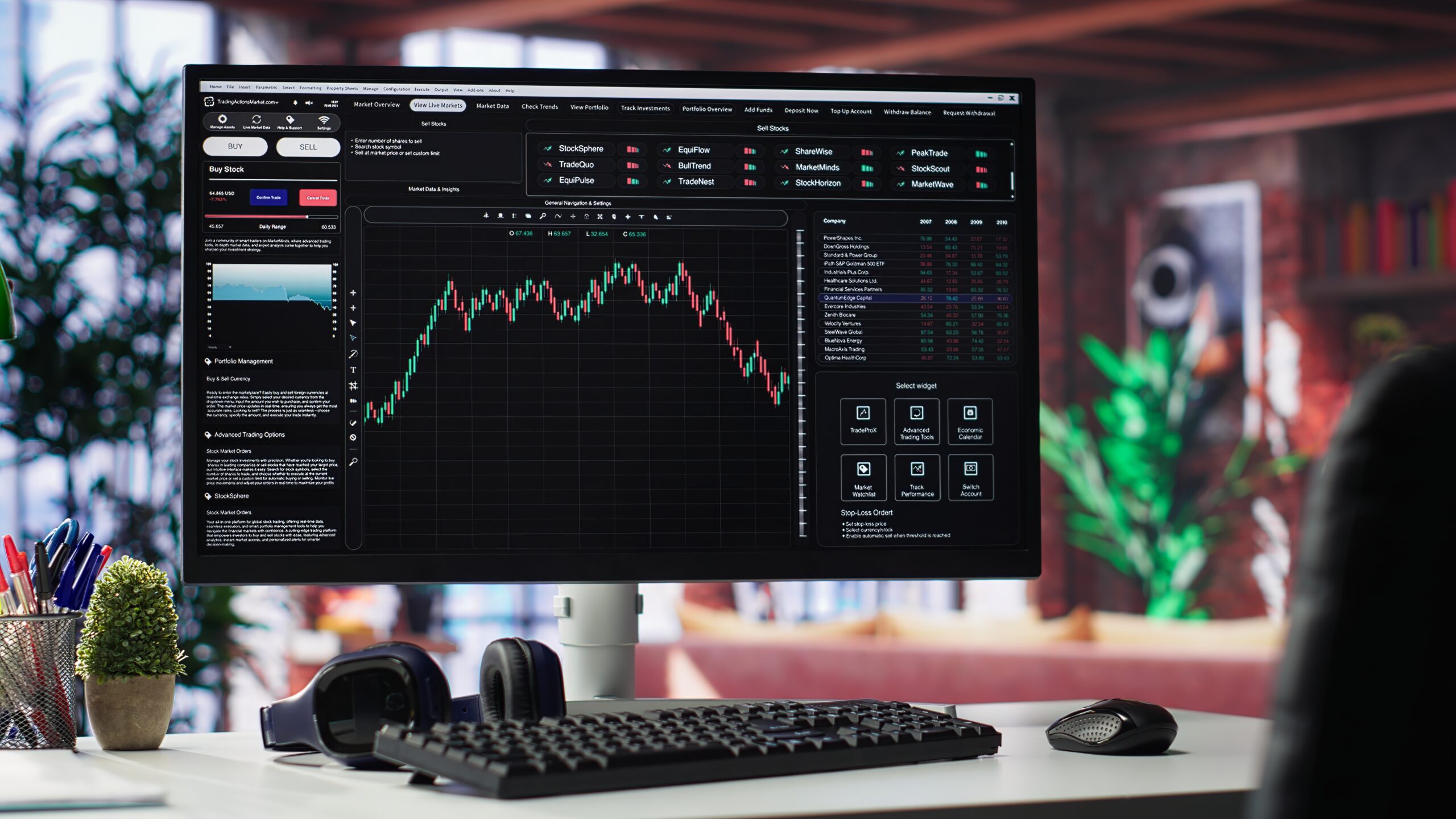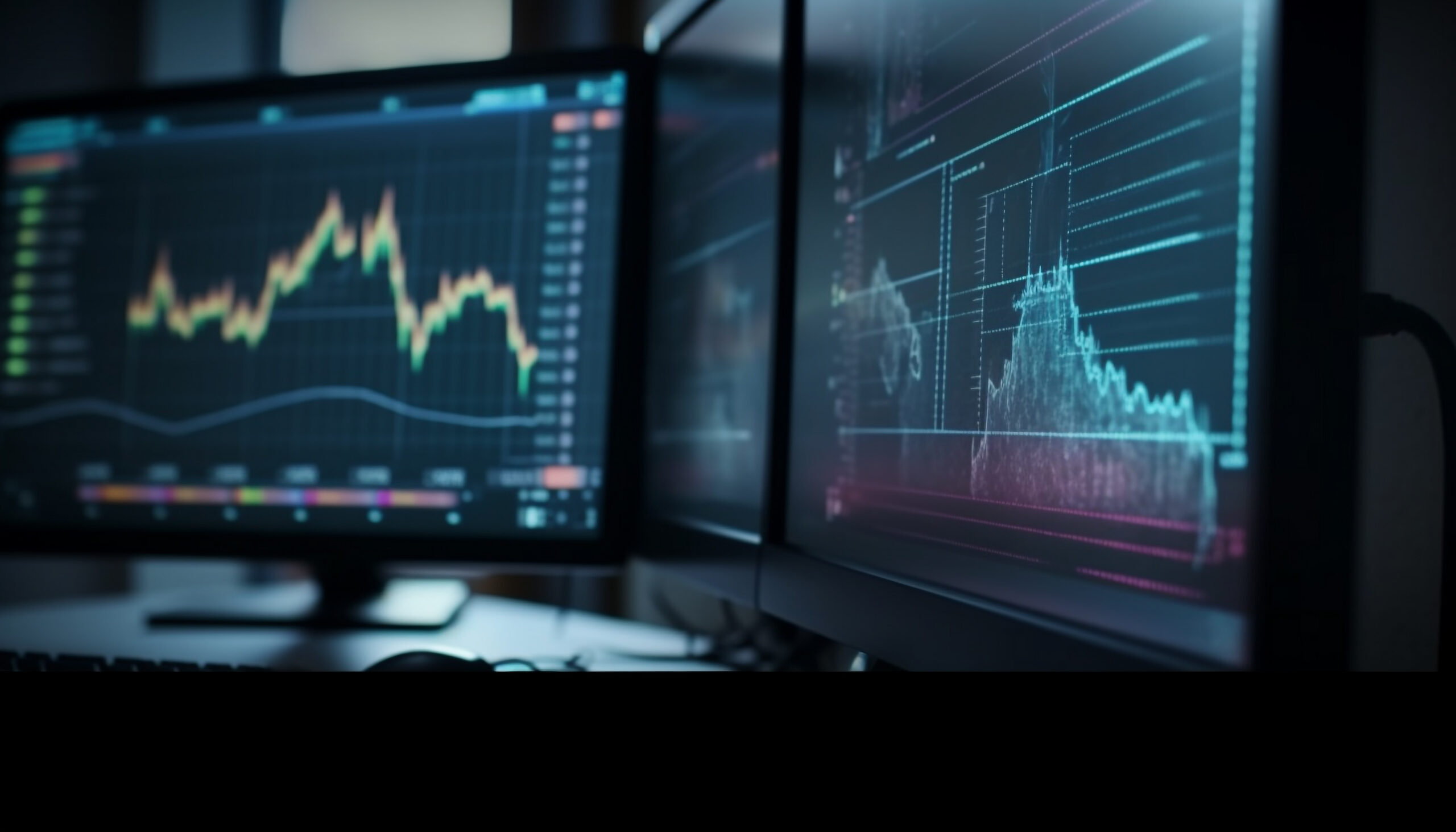Most traders find themselves constantly reacting to price changes instead of anticipating them. They watch candlestick patterns and technical indicators while missing the real story unfolding beneath the surface.
Traditional charts reveal only the skeleton of market movement, showing where prices opened, reached highs, touched lows, and closed. Meanwhile, the actual forces driving these moves remain invisible.
The problem stems from a fundamental gap in market analysis. Value charts tell you what happened, but not why it happened. They show the outcome of market battles between buyers and sellers without revealing the intensity of these conflicts.
This leaves traders guessing about market strength, attempting to predict reversals without seeing the underlying pressure building or dissipating.
The Order Flow Fundamentals
Order flow represents the lifeblood of market movement. It examines the real-time sequence of trades to determine how buying and selling pressure affects prices. It reveals the immediate intentions and actions of market participants.
Market participants place two primary types of orders that create this flow. Limit orders represent passive intentions, sitting at specific price levels and waiting for execution. These orders provide liquidity to the market and remain visible in the order book until filled or canceled.
Market orders represent aggressive action. They execute immediately at current market prices and consume available liquidity. When a trade is filled, a limit order has been matched with a market order and creates the actual transaction flow.
The sophisticated order flow charts tool (like ATAS) bridges the gap between theoretical understanding and practical application, providing traders with reliable access to complex market data through intuitive visual representations.
These platforms process thousands of individual transactions in real time and transform raw order data into actionable insights that traditional charting methods cannot provide.
Types of Order Flow Charts
Footprint Charts
Footprint charts display buying and selling pressure at each value level within a candle, offering a granular view of market dynamics. These charts break down each candlestick into its parts and show the volume traded at every cost increment.
The visual format typically displays bid volume on the left side and ask volume on the right side of each price level.
The power of footprint charts lies in their ability to reveal value acceptance and rejection zones. When large volumes concentrate at specific cost levels, it indicates strong interest from market participants.
Conversely, thin volume areas suggest price levels that market participants found unacceptable, often leading to rapid movements through these zones.
Delta Charts
Delta charts focus on the net difference between buying and selling volume at each cost level. Delta charts are especially popular in futures markets, where order flow transparency allows traders to track how aggressive buyers or sellers shift momentum around key price levels.
Positive delta occurs when prices move downward while volume delta rises, while negative delta occurs when prices rise while volume delta falls. This measurement provides direct insight into which side controls the market at any given moment.
Delta analysis becomes particularly powerful when it diverges from price action. A rising value accompanied by a negative delta suggests weakening buying pressure, often preceding trend reversals. Similarly, falling prices with positive delta indicate absorption of selling pressure by aggressive buyers.
Volume Profile Charts
Volume profile charts display the total volume traded at each level over a specified time period. The Point of Control shows where most volume is traded, helping identify key support and resistance levels.
These charts reveal the cost levels where market participants conducted the most business, creating natural gravitational points for future price action.
High-volume nodes often act as magnetic zones, which draw value back when it moves too far from the accepted one. Low-volume areas become pathways for rapid price movement, as fewer participants have established positions at these levels.
Reading Order Flow Patterns
Identifying Market Imbalances
Market imbalances occur when buying or selling pressure overwhelms the opposite side at specific value levels. Significant imbalances can signal potential price movements, with large sell imbalances suggesting hungry sellers mixed with stuck longs. These imbalances create visual cues on order flow charts through:
- Stacked volume concentrations at single price levels
- Extreme delta readings showing one-sided pressure
- Rapid volume spikes without corresponding value movement
- Asymmetric bid-ask distributions across price ranges.
Absorption and Exhaustion Patterns
Absorption occurs when large orders are executed at specific value levels, preventing the price from moving further in that direction.
This pattern appears as high volume at cost extremes without a breakthrough, indicating strong opposition to continued movement. Exhaustion patterns show diminishing pressure as trends lose momentum.
Absorption typically manifests as:
- Heavy volume at swing highs or lows
- Multiple attempts to break through key levels
- Decreasing momentum despite continued effort
- Volume spikes that fail to produce price advancement.
Failed Auctions and Incomplete Patterns
Failed auctions occur when the market fails to establish new prices, resulting in returns to previous levels. These patterns suggest rejection of new value levels by market participants. Incomplete auctions indicate ongoing price discovery, where exploration continues beyond current ranges.
Delta Divergence Analysis
Delta divergence provides early warning signals for potential trend changes. These divergence patterns suggest that underlying buying or selling pressure is diminishing, potentially signaling trend weakening or reversal. Traders monitor these patterns across multiple timeframes to confirm signal strength.
The most reliable divergences occur when:
- Price makes new highs while delta fails to confirm
- Multiple consecutive bars show opposing delta signals
- Volume increases during divergent periods
- Previous support or resistance levels align with divergence zones.
Volume Cluster Analysis
Volume clusters represent areas of intense trading activity that create lasting market memory. These zones often attract price action in future sessions, acting as reference points for institutional traders. The density and distribution of these clusters provide insights into market structure and potential breakout directions.
Implementation Strategies
Entry Timing Techniques
Order flow charts excel at refining entry timing by revealing optimal execution windows. Traders combine multiple signals to identify high-probability entry zones:
- Delta confirmation of breakout strength
- Volume absorption near support or resistance
- Imbalance resolution following consolidation periods
- Failed auction patterns at key structural levels.
Risk Management Applications
Order flow analysis enhances risk management by revealing the strength behind price movements. Weak breakouts with poor delta support suggest higher reversal probability, warranting tighter stops. Strong moves with consistent delta backing allow for wider stops and position scaling.
Multi-Timeframe Coordination
Effective order flow trading requires coordination across multiple timeframes. Daily charts establish structural context while intraday flow provides precise timing. The interplay between timeframes reveals whether short-term movements align with longer-term trends.
Technology and Platform Requirements
Essential Software Features
Professional order flow analysis demands robust data feeds and sophisticated visualization tools. Advanced platforms offer complex data processing capabilities. Key features include:
- Real-time tick data processing
- Customizable chart layouts and color schemes
- Historical order flow playback capabilities
- Integration with multiple data providers.
Market Selection Considerations
Order flow analysis works most effectively in highly liquid markets like major cryptocurrencies, forex, futures, and large-cap stocks. Thin markets provide insufficient data for reliable interpretation. Liquid markets offer consistent flow patterns that translate into actionable signals.
Common Mistakes and Solutions
Overcomplication Pitfalls
Beginning order flow traders often attempt to interpret every signal simultaneously, leading to analysis paralysis.
Successful implementation requires focusing on primary signals while gradually incorporating secondary indicators. Start with basic imbalance identification before advancing to complex divergence patterns.
Data Quality Issues
Poor data feeds or latency problems can distort order flow interpretation. Data latency and quality issues may skew interpretation, as flow analysis demands robust, low-latency data. Reliable platforms provide clean, real-time feeds essential for accurate analysis.
Context Neglect
Order flow signals require proper market context for accurate interpretation. Isolated patterns may mislead without considering broader market structure, news events, and session characteristics. Successful traders integrate order flow with fundamental and technical analysis.
Market Application Examples
Breakout Confirmation
Strong breakouts typically show consistent delta in the direction of movement, high volume at breakthrough points, and sustained flow without significant absorption. Failed breakouts reveal opposing characteristics, helping traders avoid false signals and position for reversals.
Reversal Identification
Reversal patterns emerge through exhaustion signals at extremes, delta divergence preceding price turns, and absorption patterns halting momentum. These signals provide earlier entry opportunities compared to traditional reversal indicators.
Trend Continuation Signals
Healthy trends maintain consistent delta alignment, show buying or selling interest on pullbacks, and demonstrate volume expansion during impulse moves. Weakening trends reveal deteriorating flow characteristics before price confirmation.
The mastery of order flow charts transforms trading from reactive guesswork into informed decision-making.
These tools reveal the market’s true intentions through actual transaction data rather than derivative indicators. While the learning curve demands dedication, the insights gained provide lasting competitive advantages.
Professional traders understand that successful market navigation requires seeing beyond price action into the underlying forces that create movement. Order flow analysis delivers this crucial perspective, enabling more precise timing and improved risk management in a dynamic trading environment.




